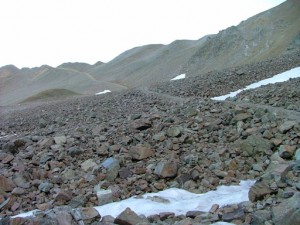Train Wreck
It was one of those bleak, cold January days, too cold for a heavy snow, but enough snow was flying to cut visibility to less than 100 yards. On the D&RGW Railroad in 1924, the trains ran on train orders, instructions detailing where each train on the line was to be at any given time. The train orders told each train when and where to pull into a passing track to let an oncoming train go by.
At 5:00 PM on January 17, 1924, Eastbound Freight #320 was to enter the Shoshone siding and wait for a westbound train to pass. Visibility was so poor that the engineer had slowed to 15 MPH instead of the normal 20 MPH. My grandfather Will was the rear brakeman on #320 and heard the conductor say that there was no way they could get to Shoshone and they would pull in to the passing track at No Name, just east of Glenwood Springs.
Will went out on the platform and was able to signal to the head brakeman in the engine to pull the train in at No Name. The train lurched through the switch and stopped. Will jumped down and threw the switch back to the main line, then the train moved along the siding to just around a bend and stopped. This was a violation of the train orders, but not much, and the crew felt safe in stopping early.
The head brakeman was walking back to the caboose for a cup of coffee when he saw the other engine’s headlight illuminating the snow just around the curve, its wheels’ flanges squealing on the rails.
“Oh, shit.” He thought as he frantically signaled with his lantern back to the engine to start the train moving. He ran yelling to the caboose just as Will looked out the back window and saw the headlight and realized the coming train, brakes squealing and whistle screaming, was going to hit them.
“Run forward!” Will yelled at the conductor as he started to climb the ladder up to the cupola, thinking to get above the impact. The train’s engine struck the wooden caboose and the back half splintered, breaking a steam line on the engine. The steam rushed into the wreckage just as the conductor jumped out and Will’s forehead hit the ladder.
He pulled himself up, blinking blood out of his eyes, thinking “If they were going any faster, we’d be dead.”
Friday, January 25. Will walked up the walk 729 Gunnison Avenue in Grand Junction. Pearl met him at the door. “Well, how did it go?” She asked.
Will entered the parlor and sat heavily in the first chair. “The superintendent fired the whole crew for disobeying the train orders. We talked about the storm slowing us down, but it didn’t matter.” He said wearily.


